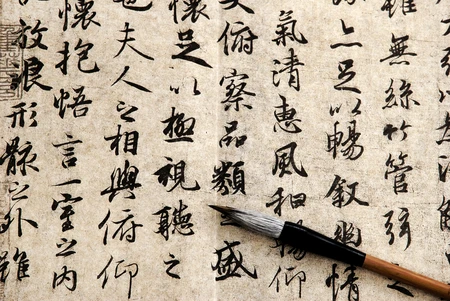I want to argue that Chinese is one of the most beautiful languages.
Chinese characters are beautiful. They are beautiful in many ways.
Chinese language isn’t mentioned much as a beautiful language, as many people don’t think it sounds beautiful, but I argue that its beauty comes from the depth of meaning of written Chinese. I do not know of any other language that carries such richness and depth of meaning in the written form.
Let me give you some examples:
I will start with the most basic and then go to the most complicated of China characters, but there are thousands more with fascinating stories in between.
The first is the Chinese word for good – hao 好,which is used when you say Hello – Ni Hao 你好 which literally means “You Good”
The left side is the character for Woman Nv 女 and the right side is the character for a Child zi 子. Together they mean good. It means the idea of a mother and child is good. This is quite a lovely idea. It also shows the Chinese emphasis on family.
There are other characters which have other meanings such as the Chinese character for Man below nan. 男
Again, this is a combination of two characters, the top is the Chinese character for field (tian) 田, the second is the character for power (li) 力. The idea of a field and power is that of the man.
Learning characters in this way brings Chinese to life and is the most interesting way I have found to learn Chinese and to remember what they mean.
Going to the other extreme, with 43 strokes, the most complicated Chinese character is the character for a type of noodles in Shaanxi province for biangbiang noodles.
The character is made of the Chinese character “to speak” (xin) 言 in the middle with “tiny” 幺 on both sides. Below it “horse” 马, with “long” (chang) 长 on both sides with. Surrounded by “moon” 月 to the left, “heart” 心 below, and “knife”刂 on the right. Then there is “cave” 穴 on the top and “to walk” 辶 on the bottom.
There is some debate about where this character comes from in Chinese. One source is that a student invented the character to get out of paying a bill in a restaurant. Others is that it is based on a sound that is made. Most likely is that a noodle restaurant which may have been a clever marketing tactic.
I’m creating a beautiful coffee table book that looks into 100 Chinese characters, with their stories, and also introduces the different types of Chinese scripts.
Contents:
- Chinese origin
- Chinese evolution over time – from oracle bones, to simplification, to coming full circle and incorporating emojis
- Chinese radicals
- Chinese fonts (the four different Chinese scripts)
- Chinese characters types – sound, meaning, compound, borrowed characters.
- Calligraphy and it’s beauty
- 100 interesting Chinese characters, and their stories explained in simple terms for a non-Chinese speaker
If you would like a copy and for updates then send me a message and I will add you to the mailing list.
